WEST POINT, N.Y. — On the precipice 240 miles above the earth, Jeff Williams was ready to enter into the void.
It was a feeling he’d become used to over the years; solid ground beneath your feet, nothing but empty air across the ledge.
But this time it was different.
This was no helicopter flying over the U.S. Military Academy’s Camp Buckner, where he had jumped countless times as a member of the West Point Parachute Team.
It was a step off the space shuttle for a seven-hour spacewalk to continue the process of constructing the International Space Station.
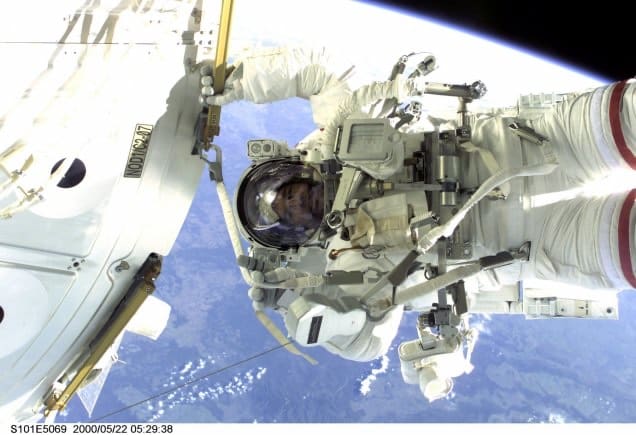
“The sensation of being outside the spacecraft, orbiting the earth every 90 minutes, controlling yourself with just fingertip control and seeing the earth below, that is why I call it the ultimate skydive,” Williams, a retired Army colonel, NASA astronaut and a member of USMA Class of 1980, said. “It is absolutely incredible.”
When he arrived at West Point from the dairy farm in Wisconsin where he was raised, a future that included flying on anything, let alone a rocket into space, wasn’t on Williams’ radar. His father had served in West Germany for a few years following World War II, but that was the extent of the military service in his family.
Williams learned about the academy through his father’s role as a high school guidance counselor and from the get go his plan wasn’t necessarily a lengthy Army career. Heck, he wasn’t even sure if he was going to stay at West Point for the full four years. His goal was simply to prove his friends wrong who had doubted he would last at the banks of the Hudson River.
“I remember having friends from my hometown and one said you won’t make it past the summer and Beast Barracks,” Williams said. “The other one said he probably won’t make it to Christmas. I was going to at least win their arguments and beat both of them.”
Then he learned to fly and any thoughts of leaving the academy were gone.
When he’d first entered the academy, Williams didn’t even know the Army had aircraft, but at the end of his plebe year in 1977 he found the West Point Parachute Team. At the same time, his cadet sponsor was the commander of the academy’s aviation detachment.
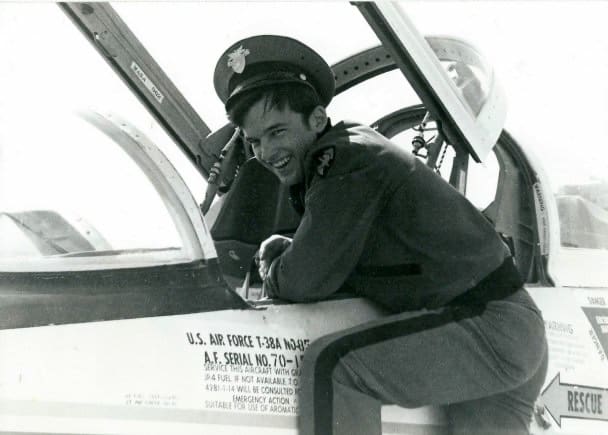
By leaving the ground and soaring through the air, he found the balance needed to be successful at West Point. His sponsor and the other members of the aviation detachment taught him about their experience flying in Vietnam and introduced him to all an Army aviator could do, while the parachute team brought him friends and adventure.
First, the members of the team learned to jump via static line. Then they did “hop and pops” where you jump out and immediately pull your parachute. Finally, they started adding freefall time, first 10 seconds, then 20, then 30.
In those days, during the afternoon the members of the team would jump into Camp Buckner, whereas nowadays the team spends its afternoons after class jumping onto The Plain at the center of the academy. On weekends, they would travel out to Walkill to an abandoned airfield and jump all day. Go up, jump, land, fold up your parachute and go again six or seven times in a single day.
Jump after jump, Williams came to love the thrill and the intricacies of learning how to use and trust the parachute system. After not even knowing the Army had aircraft, he quickly set his sights on becoming a pilot following graduation.
It was also during those years when Williams first considered the idea of being not just an Army pilot, but an astronaut. During his cow year at the academy, Gen. Bob Stewart was selected to become a NASA astronaut making him the first active duty Army officer selected by NASA. A visit by Stewart to West Point, time spent with future astronaut Jim Adamson, who was teaching at West Point at the time, and reading “The Right Stuff” by Tom Wolfe opened Williams’ eyes to the possibility of space flight, much as joining the parachute team had first peaked his interest in being a pilot.
Following graduation, Williams’ first duty assignment was Germany, just as it had been for his dad years before. He learned to fly OH-58s and Hueys, but the astronaut program was never far from his mind. He applied for the first time in 1985 and would go on to apply five more times over 10 years before being selected as a member of the astronaut class of 1996.
“It is a good lesson I try to communicate to folks,” Williams said of applying six times and interviewing three. “One, to persevere with your goals and two, don’t take the disappointments personally because they’re usually not personal.”
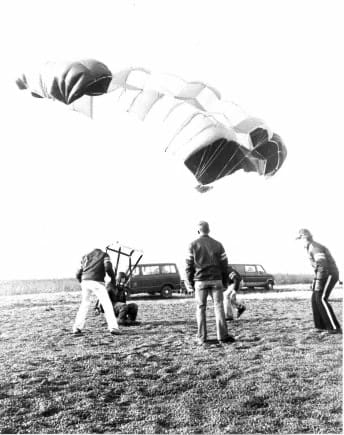
He launched for the first time on May 19, 2000 aboard the space shuttle Atlantis for a 10-day mission to work on constructing the International Space Station. He’d launch again in 2006, 2009 and 2016, each time aboard a Russian Soyuz rocket for a six-month mission seeing the ISS go from just started to fully operational across his four trips.
He spent nearly 32 hours outside performing spacewalks during his trips. It is in those experiences where his time spent training with the parachute team really came full circle to help him succeed.
Hanging by nothing but his fingertips, Williams would move around by “walking,” but it was really a hand over hand crawl through the void of space. The ability to control his body, move through the air and deal with important tasks while in a risky environment were all skills he had first learned a few thousand feet above Camp Buckner, but he was now using a couple hundred miles above earth.
“In some ways there are parallels between going out and being completely free of touching things in a skydive and controlling your body, the aerodynamics of your body by moving your arms and legs around and managing the risks and the challenges of doing a spacewalk,” Williams said.
Williams is still flight ready and on the astronaut roster, but his days of launching into space have likely come and gone following 534 days in space. The pathway from the West Point Parachute Team to the International Space Station continues, though.
Their paths to NASA were different, but as members of the parachute team, Col. Drew Morgan and Lt. Col. Frank Rubio, both in USMA Class of 1998, learned to fly together. The two made their first jumps on the same day, and although their Army careers took them to different places their paths have at times run parallel with both attending medical school and now both serving NASA as astronauts.
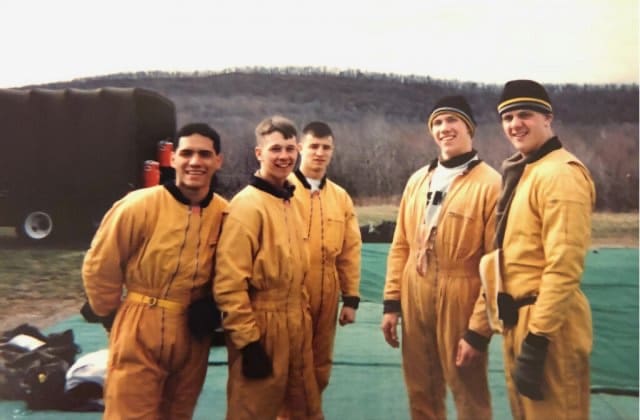
That connection started as plebes at the U.S. Military Academy when Morgan and Rubio found their way to the parachute team.
For Morgan, it was a continuation of a family legacy. Family stories of his great uncle Harry McClintock, a member of the 101st Airborne Division who jumped into Normandy on D-Day, had spurred his already budding interest in serving in the military and introduced him to the idea of becoming an Army paratrooper.
Rubio came to the academy for the education, unsure of what all was offered at West Point. He spent his first year playing what was then called 150s and is now Sprint Football but jumped at the opportunity to join the parachute team once he heard about it.
There, he found his best friends. The team demanded he give up time during the summer and over breaks, but it was worth it to take to the skies with teammates, including Morgan, who quickly became more like brothers.
“What I learned the most from the team was a sense of responsibility. Ultimately, you are getting trained to be a jumpmaster very early on in your life,” Rubio said. “You quickly learn that it is a lot of fun, it is a really neat thing to do, but it is a lot of responsibility. It is something you’ve got to take pretty seriously.”
Morgan is currently orbiting earth aboard the International Space Station during his first mission to space. He was a member of the astronaut class of 2013 and launched to the space station in July to take part in Expedition 60 and 61.
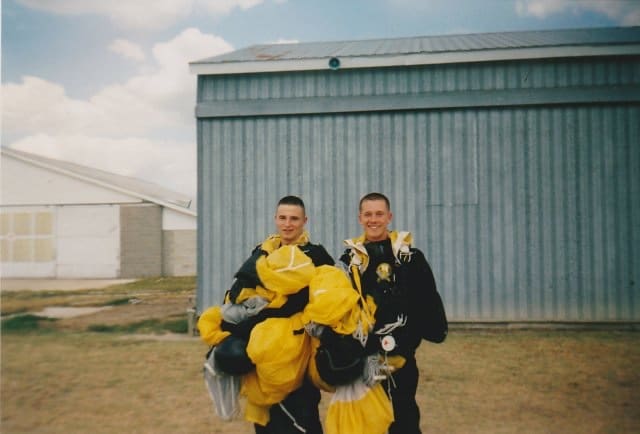
On Aug. 21, he followed in Williams’ footsteps and made the ultimate skydive into space for his first spacewalk.
“That camaraderie that we had (on the parachute team) and that dependency we had on each other, making sure that we were skilled in the aircraft and skilled in the air, our lives depended on each other to do safety checks of each other … I think about how 20 years ago, I was developing those skills at an early age and didn’t even know it,” Morgan said in a NASA interview.
While being an astronaut was always Morgan’s goal, it had only registered as a slight possibility to Rubio. That changed in 2017 with a phone call from his former parachute teammate. NASA was accepting a new class of astronauts and Morgan reached out to encourage him to apply.
“I was pursuing my own dreams at the time of being a special operations surgeon,” Rubio said. “When they took the next class and Drew gave me a quick call and said you may want to consider trying out I think you would be a good candidate, I began to think about it at length.”
Rubio was accepted as a member of the class of 2017 and began his two years of training as an astronaut candidate, which he will graduate from soon.
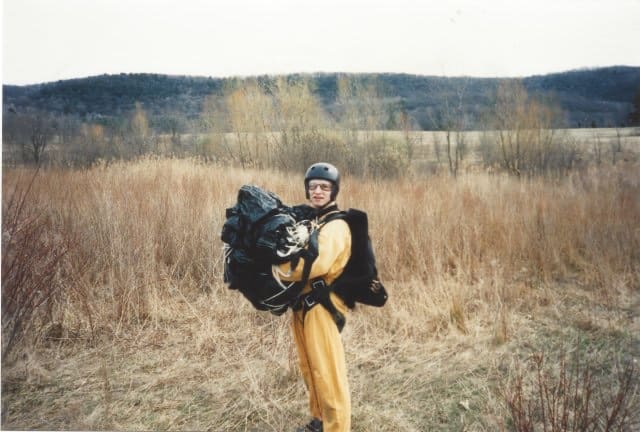
The training course teaches future astronauts how to fly a T-38 Talon, use the space suit, operate the robotics at the space station and how to operate the International Space Station. Due to NASA’s close relationship with the Russian Space Agency, astronaut candidates also have to learn Russian.
After graduation from astronaut candidate school, Rubio and his classmates will wait to be assigned missions, which typically takes a minimum of two years. After selection it is another two years of training before launching to the space station.
Williams was the first to make the leap from parachute team to astronaut, but Morgan and Rubio have followed along the same path and laid the groundwork for current and future team members to follow their own dreams to space.
With fall temperatures rolling in making the afternoons cooler and the sun setting over The Plain, the current members of the parachute team hone their skills much as their three predecessors did as cadets. Grab your parachute, fist pump the 2nd Aviation pilot, ascend to 3,000 feet, jump, land, fold up your parachute and do it all over again.
Jump after jump the team grows closer and their skills improve. How to control your body. How to trust your equipment. How to function in a high stress environment. All of it pays dividends no matter the career they choose to pursue in the Army, but as Williams and Morgan have shown and Rubio will soon learn, it also prepares you for the moment on the ledge with the earth spread out before your eyes as you prepare to make the ultimate skydive.
“To me that means I have a chance, honestly, which I think is super cool,” Class of 2021 Cadet Matthew Blejwas, a current member of the parachute team and aspiring astronaut, said. “Right now, just being able to follow in the footsteps of people that are making these great bounds for us as a society and as humanity is really humbling. I recognize that I’m in a spot where I have an incredible opportunity, and I don’t take that lightly.”
By Brandon OConnor


“During his cow year at the academy, Gen. Bob Stewart was selected to become a NASA astronaut making him the first active duty Army officer selected by NASA.”
I don’t believe that’s correct. The first Army astronaut was Major Roger Healy, Corps of Engineers.
Source: “I Dream of Jeannie” 1965-1970.